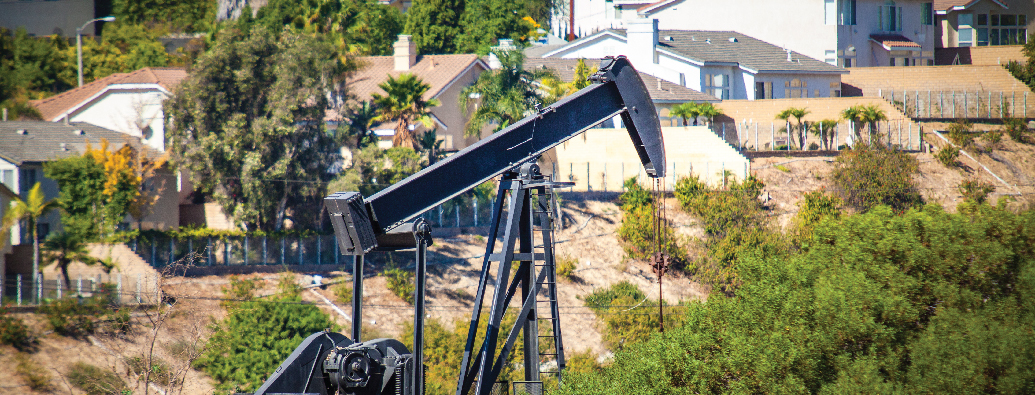
-
Category:
- Environment
With an eye on equity, inclusivity, and sustainability, planners can have a profound impact on the lives of their citizens, especially when considering how land use impacts so much of what we do. And, occasionally, we’re given an opportunity to right past wrongs, and to address decades worth of environmental injustice in parts of our communities that have long been neglected.
That is certainly the case as far as our efforts to ban future drilling of oil are concerned.
Fossil-fuel extraction here in America’s second-largest city has long been at odds with our approach to environmentalism. While some oil wells in Los Angeles have been situated in heavy industrial areas, many have been located within residential neighborhoods, nearby community parks and schools, where they have posed health risks—not to mention a risk to our climate.
Faced with sea level rise and global warming, cities are leading the response to climate change. Along with transit-oriented projects, which make it possible for cities to grow more sustainably, cities are advancing bold new strategies to improve our resilience and overall well-being.
Our efforts to ban oil and gas drilling are part of a larger continuum on the topic of sustainability—a conversation piece on what local municipalities can do to address environmental justice and climate change.
For City Planning, we are working toward building upon our prior efforts, such as Clean Up Green Up, which set out to address past injustices to frontline communities and communities of color who have been disproportionately affected by the health impacts of hazardous land uses. One of them being the concentration of harmful industrial activity—namely, drilling—in close proximity to schools, residential neighborhoods, and even community parks.
Of course, this new ordinance, which seeks to ban oil and gas drilling across the City, gives us a unique opportunity to reassess how we utilize our land at the citywide level. It marks a major milestone for the City and its residents.
Oil drilling started here in the late 19th century and by the 1930s, California was producing nearly one quarter of the world's oil output. In many ways, oil production fueled our local industrialization and growth over the ensuing decades.
That shouldn’t be the case today. Los Angeles is a beacon for innovation and green technology.
Quite simply, we are not the Los Angeles of the 1880s—an oil town with “forests of derricks.” Prioritizing the health and safety of our residents is, above all else, the central tenet of local government. That is what we are working toward, lock step with the efforts at the national and statewide levels, to become energy efficient and (eventually) independent.
Zoning in Los Angeles arose originally from a need to protect Angelenos’ health, safety, and welfare. And we, as a City and a Department, are focused on returning to these basic principles, as exemplified by this current proposal which would ban oil drilling across the City.
To learn more, visit City Planning’s website and sign up here to receive regular updates.